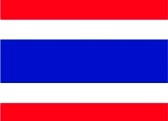All Categories



Kamakura: The ten-game match between Go Seigen and Kitani Minoru 1939 ~ 1941
Share Tweet
Get it between 2025-07-08 to 2025-07-15. Additional 3 business days for provincial shipping.
*Price and Stocks may change without prior notice
*Packaging of actual item may differ from photo shown
- Electrical items MAY be 110 volts.
- 7 Day Return Policy
- All products are genuine and original
- Cash On Delivery/Cash Upon Pickup Available








About Kamakura: The Ten-game Match Between Go Seigen And
The ten-game match between the Chinese-born Go Seigen and his Japanese rival (and friend) Kitani Minoru is person the most famous match in all of go (weiqi) history. Apart from being a clash to determine who was the world's best player, it took place during the early days of World War II following a long period of tension and fighting between China and Japan. The match had great political significance. This book describes the match in full detail. The scene is set, the players' biographies are given in depth, and every game is fully commented, based entirely on a wealth of professional opinions (quite often conflicting!), including the players' own, of course. The book was originally published by Slate & Shell in 2009 and proved extremely popular. With changes in the book market, however, the original publishers, Slate & Shell in the USA, decided to withdraw from the paper-publishing scene, and the original version went out of print, despite a re-print. Following very many requests, the author has at last decided to issue the present on-demand version in a slightly different format. The new Go Wisdom format follows his other recent books in being designed to tap into the latest theories on the best ways to study, in particular the concept of 'effortful practice.' This means the variation diagrams of the original version have been replaced by text that requires the reader to play through the variations on a board, absorbing the flow into one's intuition, and learning to visualise. This is supplemented by a large Go Wisdom appendix, which can be likened to a go concepts reference library. The idea is that concepts the reader wonders about, even those not mentioned directly in the games, can be consulted and read about in depth. Moreover, all occurrences of each concepts are fully indexed and marry up with the indexed occurrences in all other Go Wisdom books, so that the reader can study difficult concepts such as thickness and momentum, or probes and psychology, over a wide range of players and styles with a host of specific examples in the games themselves. Apart from the changes required for Go Wisdom (which include also the use of colour), the text is virtually the same as in the original version. But changes have also been made in the diagrams and some illustrations, and of course the Go Wisdom appendix itself has been added.




 (1)
(1)
























